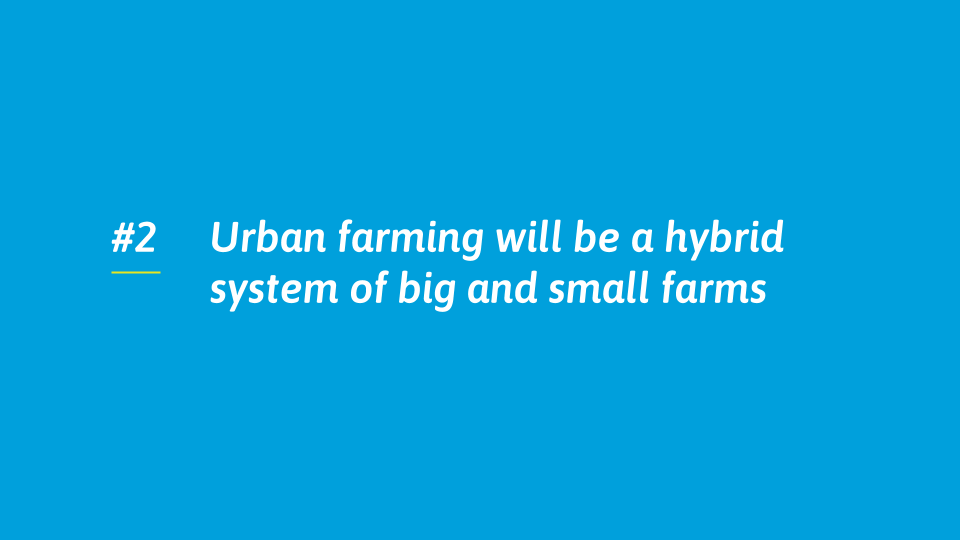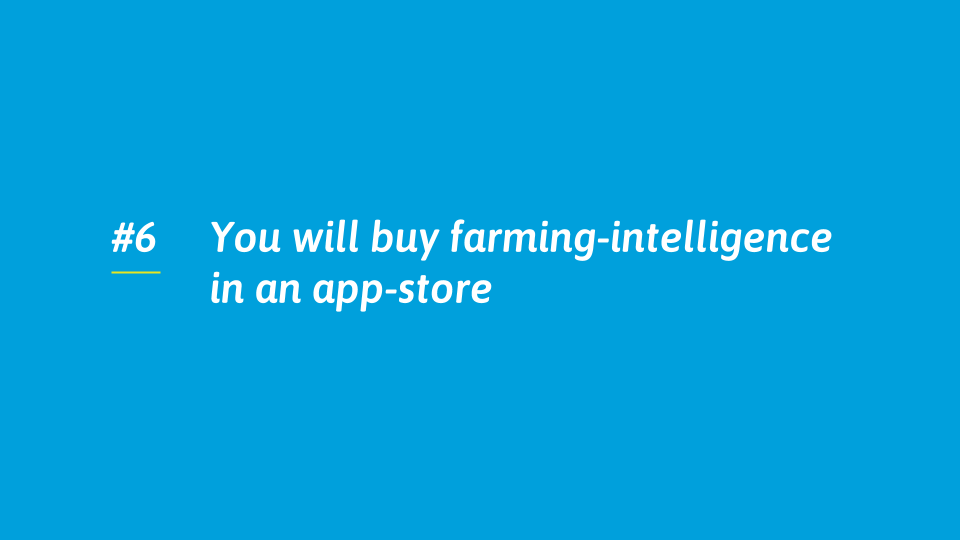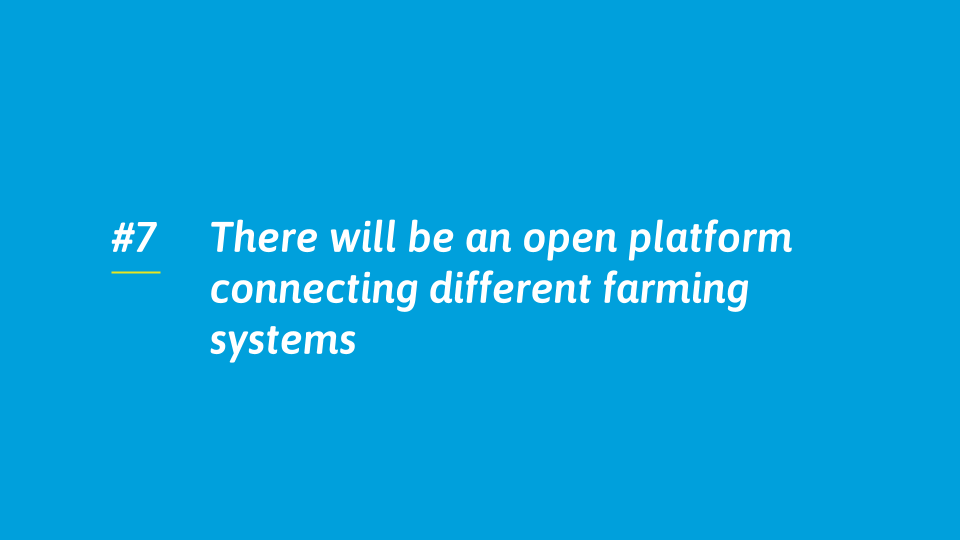Jun 19, 2018
No More False Claims!
GreenTech 2018 in Amsterdam just wrapped up last week and it’s going to take some time to digest all the information and stimuli. So many interesting people to talk to and a lot of controversial discussion on vertical and indoor farming.
Here are seven statements in an attempt to summarize my take on this year’s GreenTech:

There is a growing number of people who want or need to produce food in metropolitan areas. These people are rarely farmers, but rather retailers, chefs, hoteliers, communities or home growers. The reason is simple: supply chains are starting to get too long and too fragile and people feel the need to take responsibility for the food they need. If retailers are unable to deliver the quality a chef needs, for example, or if vegetables are really expensive and/or of low quality, once they reach the city center, then something is wrong in the way we supply food to our cities.
But, on the other hand, let’s state this clear and simple:
In my opinion, urban farming will never entirely substitute open field or greenhouse farming, but rather complements the way we produce and supply fresh food to cities. The more important freshness and taste, the more important it will be to shorten supply chains.
.png)
As a result, there will both be small and big farms. A lot of people said that if we, as an emerging vertical farming industry, want to succeed, we need to scale vertical farms up to 1 hectare and above. Unfortunately, I can’t remember who exactly said the following sentence:
“Everything below 1 hectare is just child’s play ”
To cut to the chase: Almost nobody seems to be there, yet. In an interesting panel discussion hosted by LED-manufacturer Valoya, three different vertical farming companies discussed the various challenges for urban farmers these days. Part of the discussion were:
- John Apesos, CEO & Co-Founder, GROWx, The Netherlands
- Richard Ballard, Co-Founder, Growing Underground, United Kingdom
- Mark Korzilius, Co-Founder, Farmer’s Cut, Germany
- Thomas Zöllner, Vice-Chair, Association for Vertical Farming
- Lars Aikala, CEO, Valoya
These companies (expect Valoya and the AVF) are all building and operating vertical farms. Yet, the real challenge ist not running a single farm, but rather develop concepts that are transferable to different places, different markets, different scales. Whoever figures this out first, wins, at least that seemed to be consensus in the panel discussion.
Making a case for the small farm
But, on the other hand, I’m still convinced there is a place for small farms and I’m pleased to say I’m not alone. Henry Gordon-Smith from AGRITECTURE made it especially clear that urban farming is not about producing food alone, but also about creating a relationship between food and people, as well as people and people, of course.
He also clearly stated, and I’m totally convinced he’s right about that, that there is huge potential for soil-based rooftop farming, for example, or rooftop greenhouses. It doesn’t all have to be controlled environment ag to be up-to-speed. I would also like to highlight our friends at Schaduf, who are supplying affordable, easy-to-use rooftop farms for communities in Cairo, Egypt, about 500 of which are already part of the food supply in Cairo.
No more false claims!
A lot of people said we need to stop making false claims about how promising vertical farming is. Yes, it saves water and yes, it uses less pesticides. But does it really save 90% of water? Is it really zero pesticide? How much energy goes into producing the crops?
Mark Korzilius of Farmer’s Cut put it like this:
Are you really using zero pesticides? Have you tested your seeds in the lab? Zero means zero and that is rarely ever the case.
I think he absolutely has a point here. If we want customers to understand the benefits of controlled environment agriculture, we have to prove that these benefits actually exist. And another thing that really stuck to my head was Bruno Libbrecht saying:
I pray everyday that there will be no food-safety scandal in vertical farms.
…like the e.coli or salmonella scandals we’ve just seen for lettuce in the US. Because how long would it take to regain trust of customers? And how can we make absolutely sure that food-safety is guaranteed?
.png)
Interconnectivity using APIs seems to be a huge problem, still. If asked about that, you could really feel how salespeople from bigger brands of climate computers started to feel uncomfortable. This is just an educated guess, but I felt that they knew that this was somehow important, yet at the same time couldn’t really tell what I was talking about. That doesn’t have to mean a lot, because people in sales are probably not responsible for long-term digital strategy, but it didn’t seem as this was a priority for a lot of companies.
In my opinion, open APIs are coming, just as they did in other industries. And they are going to completely change the way we use our systems. They will open up a broad range of services for farmers and farm operating companies, connect them to whatever valuable service they need. No matter if it’s a fancy weather forecast, market price predictions or more plant-related stuff like algorithms preventing plant diseases.
.png)
At the moment, most solutions are still isolated proprietary solutions. You buy the hardware and get the software with it. This results in vendor-lock-in for both hard- and software and prevents a lot of the benefits I was talking about before. I believe this is going to change. The benefits of plug-and-plant like systems heavily outweigh the status quo and customers will want just that. Why shouldn’t I be able to use a sensor of another company with my climate computer? Why shouldn’t I connect my system to another user interface by a third party vendor?
Thanks a lot to the AVF and Thomas Zöllner in particular for leading the pack in case of standardization, because this is just the way to go to enable such a development. It facilitates interconnectivity and data exchange and I absolutely hope it will succeed. It’s still a long way to go, but they just announced the open standardization committee. Anyone is free to join, also non-members of the AVF. So if you have any interest in an open standard and open APIs, please join!
.png)
Imagine this: it’s the early 2000s and you own a Nokia phone running on Symbian. Your friends use this amazing new messenger app that, bummer, is not available for Symbian. You are locked-out of your peer group because you’re locked into an eco-system slowly losing touch.
The same is going to happen in the farming industry. The more sophisticated algorithms will be, the better some user interfaces will be, the more attractive a community, data platform or marketplace, the less willing would I be to accept the limitations of my current system.
.png)
There is so much talk about AI, machine learning and data analytics these days, that it might feel like hype. But then again, just the opposite seems to be true in reality: I’ve talked to quite some plant scientists and they seem to be really concerned about the way data is used, stored and analyzed in the farming industry at the moment. In many cases it seems to be impossible to access data recorded yesterday, even if the climate computer is able to log a huge number of data points.
On the other hand, a lot of people are working on amazing stuff. Image processing, predictive analytics, yield prediction or disease prevention. There is huge potential in using this data to facilitate sophisticated algorithms. But the biggest potential might be for better supply chains, supplying fresher produce to customers and less waste for retailers.
.png)
All of the above makes me more confident than ever that there will be an open software platform connecting the dots, providing the open APIs and standardizing data exchange. If you haven’t please read my article Why The World Needs an Open Data Platform for Vertical Farming.
Thanks a lot for everyone involved, I really had a blast at GreenTech and am already looking forward to the Vertical Farming Conference in Venlo!
